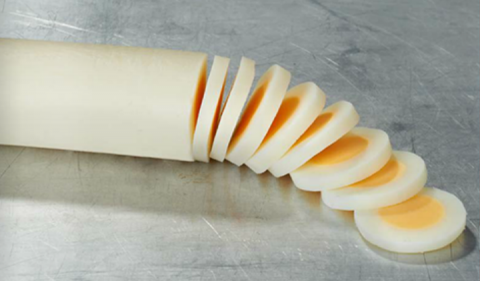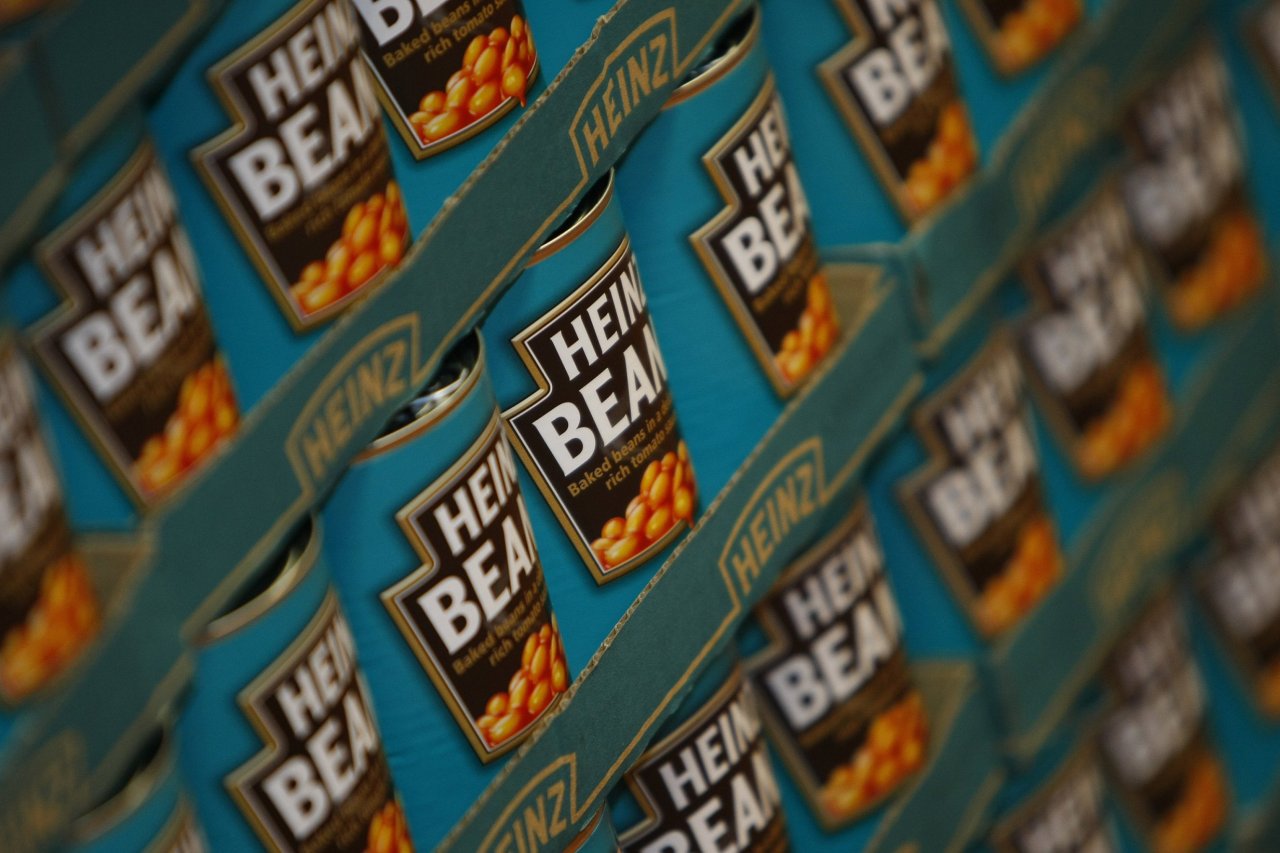On my kitchen counter is a shopping basket full of food. Ordinary things designed for people without much time to cook – an average modern family. There are sausages, yoghurt, fruit juice, ketchup, mayonnaise, a packet of sauce, soup, fish fingers, a frozen apple pie, flavoured milk, breakfast cereal, bread, healthy margarine and Quavers, a cheesy snack. And some dry dog food. The question is: what do all of them have in common?
The answer, deep down the lists of ingredients, is starch. White, powdery and tasteless, best known as a crucial tool when ironing a shirt. Though starch is present in every grain and plant, it doesn't have much use in the traditional kitchen except as a thickener for sauces, in the form of cornflour or arrowroot. A bland glue usually derived from maize, cassava or potato, starch is nothing – you'd have thought – to be frightened of. But as we've learned, painfully, modern food manufacturers do not deserve automatic trust.
In her latest book, Swallow This, veteran food scandal investigator Joanna Blythman has shone her flashlight on the industry's darkest technological secrets, from the refurbishing of "expired meat" to the tube-shaped egg for sandwich-making machines. One of the questions she asks is: why does modern processed food come packed with so many things that aren't in their home-cooked versions? Such as starch. And, just as importantly, why are we not told what "modified starch" – the most common designation on the labels, though there are also many other terms – actually is?
To the modern food and drink industry, starch is absolutely vital. It's a key multifunction tool – the Swiss army knife of the food technology kitchen. Starch stiffens, texturises and stabilises. It can be creamy, succulent, gummy, chewy, gluey or crunchy. It can take the place of fat, eggs or butter. It adds glaze to pasta sauces, protects frozen food, binds liquids and extends shelf lives.
Most important of all, it is wonderfully cheap. The reason starch is in that pot of healthy "natural" yoghurt is primarily to raise its profit margin. Real yoghurt costs a lot to make – and shoppers are prepared to pay a premium price for it. Usually it takes 100 litres of milk to make just 40 of proper Greek yoghurt. But adding starch, Blythman found, means that 100 litres of milk can be stretched to produce almost the same volume of yoghurt. And, the yoghurt can still, technically, be called "low fat".
Starch manufacturers quite brazenly boast about this – "Replace expensive ingredients with no-compromise alternatives to reduce cost, not consumer appeal" – runs the copy in one trade brochure. Starch is a filler that will stand in for anything that, however natural or necessary, rings alarm bells with the diet-conscious consumer. So it's a must for manufacturers of "healthy" and "light" products. It's why Hellmann's Light Mayonnaise – a substance you'd expect to contain just oil, egg, vinegar and some seasoning – has "modified maize starch" on its back-of-the-jar list. Quite why there is starch – and "esters of wood rosins" in the best-selling Oasis fruit drinks, no one could tell me. Even the customer care staff at Coca-Cola, Oasis's makers, didn't know – they promised to take the question to a scientific adviser and get back to me. They didn't.
I asked Unilever, manufacturer of Hellmann's, why there was starch in the Hellmann's Light. John in customer engagement was frank: "It's there for the texture, it makes it come out of the bottle more sticky and less runny . . . . The regular Hellmann's mayonnaise is fattier and that makes the consistency naturally." Consistency is one of the secrets of starch's charm: it's why you use starch as wallpaper glue. After all, starch is ultimately bonded glucose molecules, which are soluble in water but come together when semi-dry.

In a supermarket aisle full of taste-enhancers, antibiotic-laced meat and crude-oil-derived colourings, bland old plant-derived starch sounds like, as Blythman puts it, "the least of our worries". But it is not.
For a start, she explains, the starch you see in most manufactured foods is nothing like the carbohydrate you might use to thicken a gravy. "Modified starch" may have been altered in all manner of different ways – oxidised, gelatinised, converted with enzymes, bleached, broken down with acids, bonded with phosphates or even, by toasting it, turned into a sugar.
"Modified starch is not something you could cook up in any home kitchen," says Blythman. "For example, to prevent tomato sauce spilling off a factory pizza during baking, a modified starch is often treated with a chlorine solution and added to the topping." But these things do not have to be spelled out. Always chasing the "clean label" to reassure customers, food companies dodge European regulation and use unthreatening words like "soluble fibre" or "dextrin" or "stabiliser" to describe starches that may have been modified with what would otherwise sound like toxic chemicals.
During her research, Blythman even found one starch company selling the product in a way that seems plain fraudulent: "[It] cleverly allows food manufacturers to remove some butter content from products and still use the label 'all butter', which highlights to consumers that the food is a decadent product, the finish of the product would retain the same 'shortness' and buttery richness and mouth-feel as the full-fat equivalent".
Although Blythman makes the point that starch often does its work in products that have had fats removed to make them "light", starch breaks down into simple sugars, adding to the sweetness load in processed food that is probably the key to the rich world's soaring obesity levels.
How far all this is removed from what we think of as food is revealed by the manufacturer who told Blythman how to make a Spanish flan (or crème caramel): "Your base starch serves as a viscosifier, which establishes your food's structure . . . Co-texturisers [another set of starches] fine-tune texture properties. They bring out the more subtle differences in texture that we experience in our mouths while eating, such as mouthcoating [creaminess] and meltaway [lusciousness]."
Huge savings are available. Starch can stand in for 30% of the cream in a ready-meal spaghetti carbonara, or for 25% of the tomatoes in a tomato sauce. As Blythman concludes, "No wonder food manufacturers are glued to the stuff."
Joanna Blythman's Swallow This is published by 4th Estate in the UK.

























